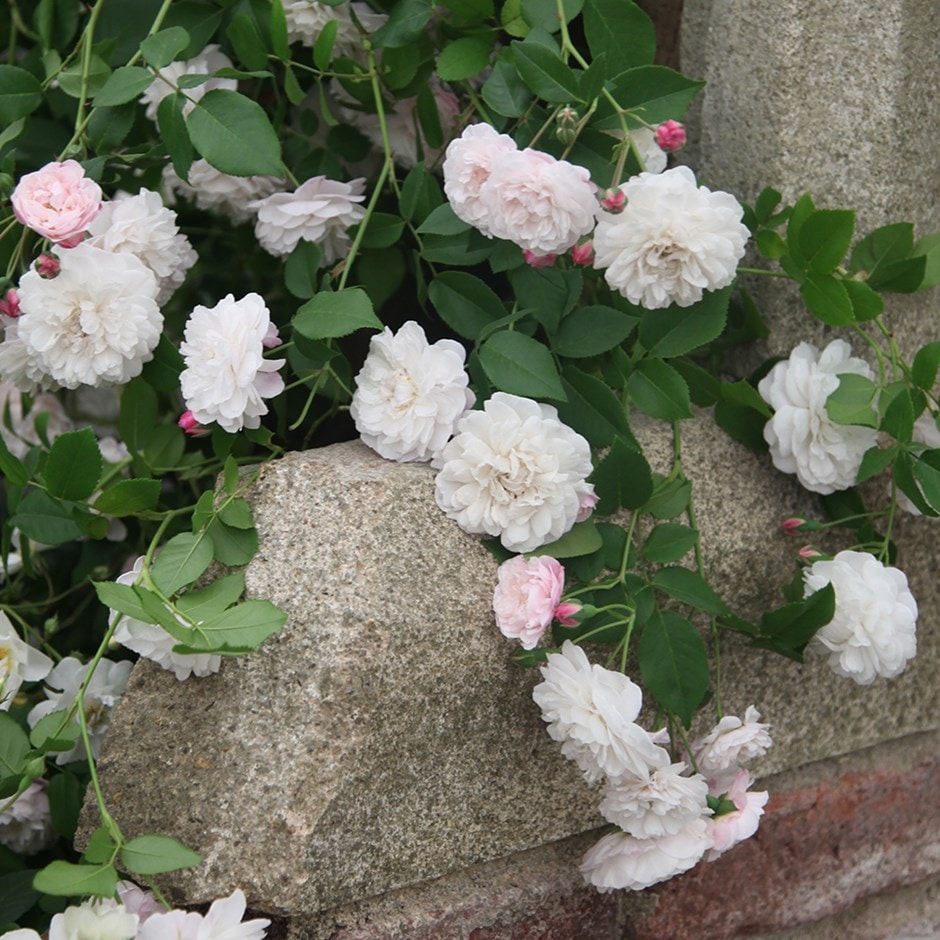To avoid dry conditions, and to ensure good soil contact around the rootball, we advise planting climbers at least 30cm (12in), and preferably 45-60cm (18-24in) away from the base of a wall or fence. An even greater distance should be maintained when planting climbers beside an existing tree or shrub.
If planting in winter, choose a frost-free spell when the soil is not frozen. Roses are quite deep-rooted plants so dig a deep hole roughly twice as wide as the plant’s roots and mix in a generous amount of composted organic matter. A top-dressing of a general purpose fertiliser can be worked into the surrounding soil and we also recommend using Rose Rootgrow at this stage to encourage better root development. This is particularly important when planting into a bed where roses have previously been grown as Rose Rootgrow is said to combat rose sickness (aka replant disease). Before planting you will also need to make sure that there is adequate support for the rose to grow onto.
Remove the plants from their pots and gently spread out the roots before placing them in the centre of the hole. Try to ensure that the 'bud union' (the point where the cultivated rose has been grafted onto the rootstock, and from where the shoots emerge) is at soil level. You can judge this quite easily by laying something flat, like a spade handle or bamboo cane, across the top of the hole. When they are at the right height, back-fill the hole, firming the soil down gently before watering the plant well. Tie the stems to the support in an open fan shape and as new shoots emerge, tie these in horizontally.
When planting against a large tree, dig a hole about a metre away from the trunk and angle the rose towards the trunk. The tree must be mature and strong enough to take the weight of the rose. Or you can train the rose up to the crown of branches, using wooden supports. In this case the rose should be planted on the outer reaches of the tree's canopy. Allow it to scramble up the supports and then into your chosen tree.
Water generously until well established, and apply a specialist rose fertiliser (following the manufacturer’s instructions) each spring. They will also benefit from a generous mulch of composted farmyard manure in spring, but make sure this is kept away from the stems.
When your rose has filled the allotted space, one in three of the oldest stems can be cut right back to their base. In smaller areas, remove all the stems that have flowered, tie in new stems to replace them, and then shorten the side shoots of the remaining stems by up to two thirds. This should be done in late summer after their flowers and hips have faded. Rambling roses usually respond well to hard pruning, so those that have become overgrown can be renovated from late autumn to late winter. First remove any dead, damaged or weak-looking stems completely. Keeping from four to six young stems, cut all the others right back to their base. Shorten the side shoots on the remaining stems by up to a half and tie these onto the support.










